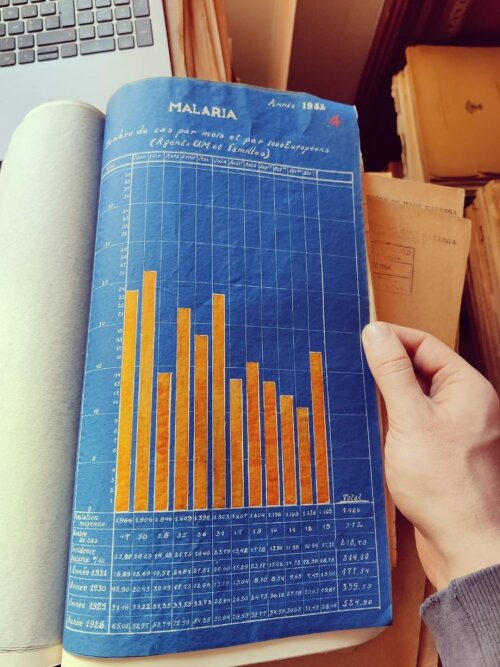Historical data links climate change to malaria increase
Belgian and Congolese scientists can establish link through analysis of historical data
A century’s worth of medical records stored in dusty archives reveal earlier onset of the malaria season in southern Congo due to global warming. In areas with seasonal malaria, warmer temperatures now arrive earlier and last longer – a boon for the mosquito-borne parasite that thrives best at a temperature range of 20-25°C.
Using unique data from historical health and climate records for the province of Haut-Katanga in the Democratic Republic of the Congo (DRC), scientists from Belgium and DRC have determined that rising temperatures, as a result of climate change, are leading to shifts in the timing and geographic range of malaria infections in higher altitude regions.
Malaria is an infectious disease that affects over 200 million people worldwide and claims hundreds of thousands lives annually. In Central Africa alone, where malaria is endemic, it still accounts for 200,000 deaths each year, especially in DRC.
The development of the Plasmodium parasite that causes malaria in humans is hampered below 16°C. This threshold means malaria transmission is seasonal or even absent in higher-altitude areas, as it cannot spread readily during the colder months.

The researchers from AfricaMuseum, UAntwerpen and the Université de Kinshasa scoured old archives for 20th-century medical records and documented malaria control interventions kept by mining companies operating in Haut-Katanga (DRC), as well as climate data from colonial records, satellite images, and weather stations. The earliest records date from 1917.
Malaria infections dropped significantly from the late 1940s with the introduction of concerted malaria control measures like DDT and indoor insecticide spraying, aimed at curbing mosquito populations. But when scientists compared the historical data with contemporary health and climate records, they found that malaria incidence had returned to pre-control levels, and that this coincided with the earlier onset of the malaria season and a rise in average temperatures.
“The temperature profile just before the seasonal surge in malaria infections has risen by 5° over the last century, from 12° to 17°,” said Joachim Mariën, now at the Institute of Tropical Medicine in Antwerp. “This makes it far easier for the parasite to reproduce. Malaria incidence is now back to 1930 levels even though control measures are still in place, albeit not with DDT, which was banned in the early 1970s.”
Tine Huyse of the AfricaMuseum added that “without the historical data for malaria infections and climate, we would not have been able to see the relationship as clearly. They are often neglected, but historical records and archives are indispensable resources for research to this day, especially when it comes to understanding long-term effects.”
The researchers emphasise the importance of ramping up efforts such as indoor residual spraying to reduce mosquito numbers, a key strategy for controlling and eliminating the disease, especially in high-altitude regions impacted by climate change.
The publication A century of medical records reveal earlier onset of the malaria season in Haut-Katanga induced by climate change was published in BMJ Global Health. Read the full study here: https://gh.bmj.com/content/9/10/e015375